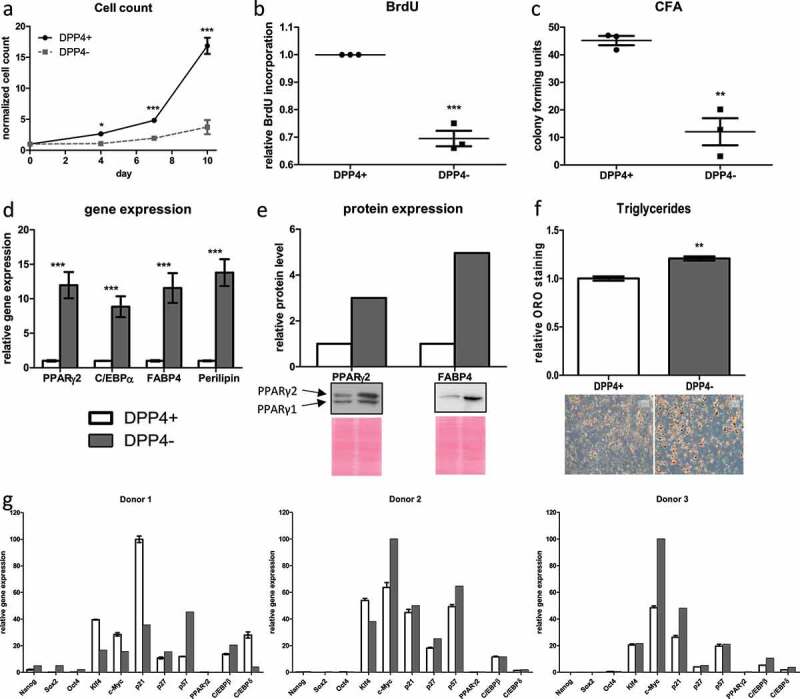Figure 3.

Cell surface DPP4+ ASCs possess higher proliferative and self-renewal capacity but lower adipogenic capacity than DPP4− ASCs ex vivo. Directly after isolation, SVFs were subjected to flow cytometric sorting to compare DPP4+ and DPP4− DLK1−/CD34+ ASC. (a) Growth curve assessed as a number of events recorded in 90 s with FACS, (b) BrdU incorporation assay and (c) colony formation assay were performed as a measure of proliferative and self-renewal capacity; n = 3 donors, mean ± SEM is shown. Adipogenic differentiation was assessed by the analysis of (d) gene expression of PPARγ2, C/EBPα, FABP4 and Perilipin and (e) protein levels of PPARγ2 and FABP4 on day 9, and (f) triglyceride formation on day 14 post-induction of adipogenesis, representative results from three donors are shown, mean ± SEM is shown. (g) Gene expression analysis of NANOG, SOX2, OCT4, KLF4, c-MYC, p21Cip1, p27Kip1, p57Kip2, PPARγ2, C/EBPβ and C/EBPδ of three donors immediately after sorting; for analysis, gene expression was normalized to the highest expressed gene which was set to 100. Gene expression was normalized to β-actin, and protein expression was normalized to total protein via Ponceau S staining.
